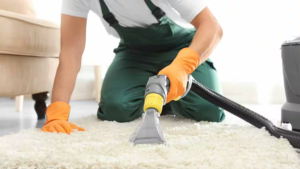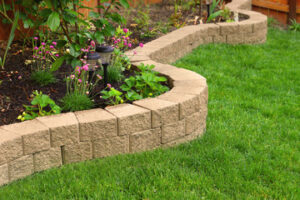Action Generator is an important piece of equipment to have around in case of a power outage. It keeps food from spoiling and vital medical equipment operating, and it ensures that you won’t be left in the dark.

Generators produce electrical energy by mechanically spinning a rotating electromagnet (armature) inside of a stationary magnetic field (stator). This generates electricity through copper wiring.
The power output of a generator is the amount of electrical energy it can generate. This energy is used to run appliances and equipment in residential, commercial, industrial, and municipal buildings. It can also be used to power transportation systems like trains and aircrafts, as well as large infrastructure projects such as dams and hydroelectric plants.
Power can be measured in various units, but the most common is watts (W). This unit measures the number of electrons moving through an electric circuit at a given speed. The voltage that pushes these electrons along is measured in volts. If the generator is producing more power than its rated capacity, the output is measured in kilowatts (kW).
A generator converts mechanical energy into electricity through an electrical motor that works in reverse. The mechanical energy can come from a variety of sources, such as waterfalls and dams turning turbines; solar, wind, or diesel fuel powering electrical motors; nuclear fission; or fossil fuels such as gasoline or natural gas. Once converted into electrical energy, the power can be distributed over transmission lines to customers.
The generator’s power can be increased by increasing the strength of its magnetic field or increasing the speed of rotation. The size of the wire coils and the type of materials used also affect its output power. Power output can be decreased by changing ambient conditions. For example, operating a generator at higher elevations or in hot temperatures can reduce its power output. In these cases, a technique called derating is employed to estimate how the generator will perform in new conditions. The results are then used to calculate the generator’s maximum rated continuous power rating.
Fuel Type
The fuel type of your generator is one of the most important considerations for purchasing a new power generation system. Generators run on four main types of fuel: gasoline, diesel, natural gas and propane. Each has unique benefits and drawbacks based on your power requirements, available resources, and other factors.
Gasoline is the most common fuel used for portable generators and is widely available at local gas stations. It is ideal for short-term power needs and is usually cheaper than other options. However, gasoline isn’t the most suitable choice for larger generators that require prolonged usage. It has a lower energy density than other fuels and will degrade faster under constant load.
Diesel is a common choice for large industrial and commercial backup generators due to its durability, efficiency, and reliability. It is also less flammable than other fuels and can be stored for longer periods of time. Diesel generators are usually more expensive than gas units but operate at a higher efficiency under heavy loads. They can be operated on dyed or farm diesel fuel, which is often sold at a reduced tax rate and may not require the purchase of special fuel additives.
Propane is another commonly used fuel for backup generators. It can be sourced easily and is typically stored in tanks that are mounted on the generator frame or located remotely. It is an alternative to other fuels and can operate in colder environments but has a lower BTU base than other types of fuels. It can also be used on dual-fuel LP/NG engines which provide about 10% less output than gas generators.
Choosing the right generator for your business is a big decision. Assurance Power Systems can help you find the perfect power generator for your specific needs and assist with maintenance, repairs, and other services to ensure that it continues to work effectively. Call us today to learn more about our range of generators.
Fuel Tank
A generator requires a large amount of fuel to run. This is why it’s important to consider the size of your fuel tank when purchasing a backup generator. The size of your tank will determine the length of time that your generator can run when it’s fully fueled. This will help you prepare for an extended blackout or other power emergency. A larger fuel tank will also help to prevent sediment from building up inside the generator, which can block the engine and reduce its lifespan.
There are several different types of generator fuel tanks, including sub base, underground and above ground. Each type of tank has its own pros and cons. For example, underground tanks are more expensive but they last longer than above ground tanks. The best option for you will depend on your specific needs and budget.
When choosing a fuel tank, you should also consider the location of your generator. Ideally, the tank should be located away from the generator to prevent fire hazards. It should also be properly ventilated and inspected to ensure safety.
Local regulations can vary from state to city regarding generator fuel tanks. These regulations may include maximum tank sizes, minimum tank levels, and other code requirements.
Depending on your application, you can choose between a single wall or double wall generator fuel tank. Single wall tanks are simpler to make and can withstand a leak, while double-wall fuel tanks provide additional security from the elements. Additionally, you should be aware that a fuel tank must have a venting system to avoid overpressure and vacuum during refilling and drainage. In addition to this, a fuel tank should have a metal-to-metal connection between the filler nozzle and the generator fuel line to prevent sparks.
Noise
Noise is a problem for many homeowners considering generators as backup power sources. Depending on the state, county or city in which they live, the local noise ordinances may establish maximum permissible sound levels at property lines when the generator is running. To meet these requirements, accurate sound measurements must be made in a free field environment to determine the existing ambient noise level at the property line without the generator set running and the expected sound level with the generator set operating.
A generator’s noise is a combination of sound from the engine, alternator and cooling fan and vibration from the mechanical components. Most models produce only minimal noise, comparable to a toilet flushing or washing machine spinning. However, the more powerful a generator is, the louder it will be. To reduce the amount of noise produced, homeowners should keep the generator on a surface that will dampen its vibration rather than amplifying it. Some generators are available with built-in barriers to reduce noise, and other models can be modified by constructing acoustic barriers around the unit.
In addition, if the noise from the generator is a significant concern, special quiet generators are available with enclosed engines designed for significant noise reduction. However, these units are generally more expensive than traditional open-framed generators.
In some cases, more extensive noise mitigation may be required to comply with local noise ordinances or to reduce the impact on neighbors. This requires the use of sound-attenuating enclosures that can be very expensive, but which can also significantly impact generator performance and load-carrying capacity. If this is the case, careful planning and design from the beginning is essential to attain noise control goals without negatively impacting generator operation and performance.








